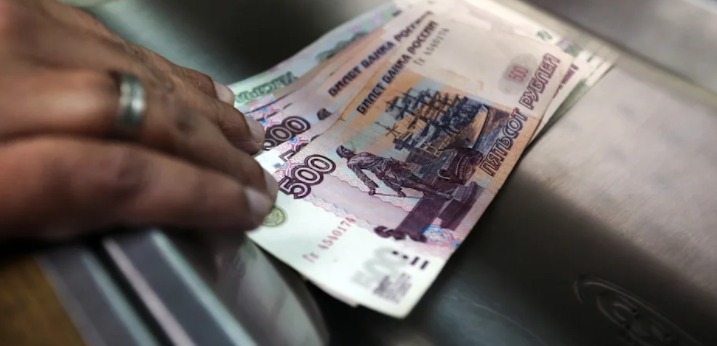Russian ruble is crashing.
Economic sanctions on Russia following the country’s invasion of Ukraine have sent the Russian ruble for a tailspin. Following several measures from Western countries to isolate Russia’s economy, the ruble lost over 30% of its value against the U.S. dollar.
A devaluing currency makes sense, given sanctions on Russia’s largest banks and the severance of other firms from the international banking system known as SWIFT.
But the most impactful measure on the Russian ruble is the Western freeze imposed on the nation’s central bank, the Bank of Russia.
On Feb. 28, the U.S. Treasury’s Office of Foreign Assets Control (OFAC) blocked off the Russian central bank’s access to any of its assets in the U.S. Doing so harms the government’s ability to defend the Russian ruble from rapid devaluation.
Several other countries joined the U.S. in essentially freezing the Bank of Russia’s assets, including Japan, Germany, the United Kingdom, the European Commission, and Italy.
What does it mean to freeze a country’s central bank assets?
The Treasury’s actions did not necessarily “freeze” the Bank of Russia itself, but rather any assets that it holds abroad.
In today’s modern financial system, most assets are not physically held but accounted for digitally. For the Bank of Russia, even though it may own reserves of foreign currencies and gold, those bills and bars may be held in Japan or in the United States.
Those jurisdictions can therefore decide to lock the country from being able to access those reserves — which is exactly what the U.S. and its partners have done against Russia.
“This action effectively immobilizes any assets of the Central Bank of the Russian Federation held in the United States or by U.S. persons, wherever located,” the U.S. Treasury said of the action. Several European countries have made similar moves, as has Japan.
How does this impact the ruble?
This concerns the Russian central bank’s $630.2 billion in reserves, which would otherwise have helped the country stabilize the ruble.
Because a currency’s value can fluctuate according to the flow of foreign exchange around the world, central banks often hold a war chest of other countries’ currencies — and sometimes gold — to counter any risk of devaluation.
When a country’s currency is tumbling, it can buy up its devalued currency using its reserve assets (i.e. U.S. dollars) to prop its value back up.
But if it cannot use those reserve assets because sanctions prevent them from doing so, it becomes vastly more difficult to counteract.
Can’t Russia use other reserve assets?
Sure, and that’s a big reason why Russia has moved in recent years to reduce its holdings of U.S. dollars.
As of 2021, only about 16.4% of the Bank of Russia’s reserves are in U.S. dollars, according to the central bank itself. About 21.7% of its holdings are instead in gold and 13.1% in Chinese yuan.
But the international community’s collective efforts make the sanctions more potent. When looking at where the Bank of Russia’s assets are stored, sanctioning countries make up at least 48.6% of the Bank of Russia’s foreign exchange and gold assets reserves.
Making it difficult to access half of a central bank’s reserves drastically cripples its ability to counter a devaluing currency.
The implications of a weakening ruble are serious; it makes it more expensive to buy imports and stokes concerns about a banking collapse. The risk of bank runs increase as citizens worry about the value of the domestic currency.
Julia Friedlander at the Atlantic Council pointed out to Yahoo Finance Live that this is not the first time that a central bank has been targeted by sanctions, although she noted this is the largest economy by size to face one so far.
“I don’t really know how this is going to play out,” Friedlander said on Feb. 28. “But it really does show coordination between the U.S. and its closest allies can really take a hatchet to anything they want to.”



Comments are closed.